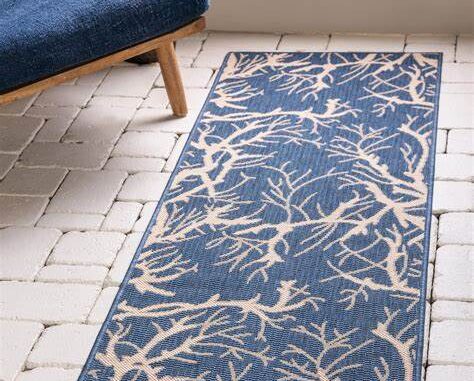

rug
音标:
英音/ rʌɡ / 美音/ rʌɡ /
听听基本释意:
外刊例句:
Rather than selecting a bag of chips off the shelf, Muhammad Ahmed spreads out a small rug on the floor in the corner and offers worship.
穆罕默德·艾哈迈德没有从架子上挑选一袋薯片,而是在角落的地板上铺上一块小地毯并进行崇拜。
—Washington Post
“I think that was a missed opportunity. But that’s the kind of spirit we’re going to need to unite this country rather than sweeping those concerns under the rug.”
“我认为这是一个错失的机会。但我们需要这种精神来团结这个国家,而不是掩盖这些担忧。”
—Washington Times
In the village of Ouge Dimt, a man rushes to greet a van bringing rugs, mattresses and tarpaulins, and urgently shouts parking instructions to the driver.
在 Ouge Dimt 村,一名男子带着地毯、床垫和防水油布冲向一辆货车,并紧急向司机喊叫停车指示。
—BBC
基本释意:
noun
floor covering consisting of a piece of thick heavy fabric (usually with nap or pile)
小地毯,垫子;<英> (盖腿的)厚毯子,毛毯;<美,非正式>(男子的)遮秃假发;(马的)披毯,裹毯
同义词:
carpet,carpeting
短释义:
A rug is smaller than a carpet, which usually covers a room’s entire floor — rugs leave parts of the floor exposed. Some are thick and dense, providing a cushiony area for walking or sitting. Rug also informally means “wig or toupee,” so you could say, “Did you see that guy’s terrible blonde rug?” And if you want to pretend something didn’t happen, you’ll have to colloquially “sweep it under the rug,” or hide it.
地毯是由机织物制成的覆盖地板的东西。如果楼下的邻居抱怨噪音,请尝试购买地毯。
长释义:
A rug is smaller than a carpet, which usually covers a room’s entire floor — rugs leave parts of the floor exposed. Some are thick and dense, providing a cushiony area for walking or sitting. Rug also informally means “wig or toupee,” so you could say, “Did you see that guy’s terrible blonde rug?” And if you want to pretend something didn’t happen, you’ll have to colloquially “sweep it under the rug,” or hide it.
地毯比地毯小,地毯通常覆盖房间的整个地板——地毯会使部分地板暴露在外。有些又厚又密,为行走或坐着提供了缓冲区域。地毯也非正式地表示“假发或假发”,所以你可以说,“你看到那个家伙可怕的金发地毯了吗?”如果你想假装某件事没有发生,你就必须通俗地说“把它扫到地毯下”,或者把它隐藏起来。
文学例句:
“You’ll never know what you could become if you stay here,” she goes on, and I stare at the rug.
“如果你留在这里,你永远不会知道你会变成什么样子,”她继续说道,我盯着地毯。
—On the Come Up by Angie Thomas
So, I would retire each day with my favorite shoe to the rug and chew.
所以,我每天都会把我最喜欢的鞋子放在地毯上咀嚼。
—Bunnicula by Deborah Howe and James Howe
Somebody had gone over the entire parlor with it, a big room with fringed throw rugs, an old piano with a lace runner, and cane-bottom rockers draped with afghans.
有人用它把整个客厅都翻遍了,一个大房间,铺着流苏地毯,一架带花边滑轨的旧钢琴,还有挂着阿富汗地毯的藤底摇椅。
—The Secret Life of Bees by Sue Monk Kidd
词源:
rug (n.)1550s, “a coarse, heavy, woolen fabric,” a word of Scandinavian origin; compare Norwegian dialectal rugga “coarse coverlet,” from Old Norse rogg “shaggy tuft,” from Proto-Germanic *rawwa-. Perhaps it is related to rag (n.1) and rough (adj.), and compare rugged.
The original meaning is obsolete. The sense evolved or expanded to “thick coverlet or lap-robe, heavy woolen wrap” used for various purposes (1590s), then “mat for the floor” (by 1808). The meaning “toupee” is theater slang attested by 1940.
To cut a rug “dance” is slang attested by 1942 (rug-cutter “expert dancer” is recorded by 1938). To sweep or brush something under the rug in the figurative sense of “conceal in hopes it won’t be noticed or remembered” is by 1954. Figurative expression pull the rug out from under (someone) “suddenly deprive of important support” is from 1936, American English. Earlier in same sense was cut the grass under (one’s) feet (1580s).Related entries & more
下面是词源的翻译(机器翻译比较难翻,参考着看)
rug (n.)1550年代,“一种粗糙、厚重的羊毛织物”,这个词起源于斯堪的纳维亚半岛;比较挪威方言 rugga“粗糙的床罩”,源自古挪威语 rogg“毛茸茸的簇绒”,源自原始日耳曼语 *rawwa-。也许它与rag(n.1)和rough(adj.)有关,并且比较粗犷。原来的意思已经过时了。该含义演变或扩展为用于各种目的的“厚床单或长袍、厚重的羊毛包裹物”(1590 年代),然后是“地板垫”(到 1808 年)。 “toupee”的意思是 1940 年得到证实的戏剧俚语。1942 年得到证实的俚语是“cut a rug”(舞蹈)(1938 年记录的“rug-cutter”“expert dancer”)。比喻意义上的“将某物扫过或刷到地毯下,希望它不会被注意到或记住”是在 1954 年。比喻性的表达把地毯从(某人)下面拉出来“突然失去了重要的支持”来自1936年,美式英语。早些时候,同样的意义是割草(1580年代)。相关条目及更多
本站没有存储任何书籍、杂志和报纸。
页面内容只做展示和推荐。如果您喜欢本期内容请购买正版。
This site does not store any books, magazines or newspapers.
The contents of the pages are for display and recommendation only.
If you like the content of this issue please purchase the original.